Cold traffic can be hard to convert. New visitors don’t just become customers the first time they come across your business—you need to earn their trust first.
Social proof, however, can facilitate that process. It’s one of the most effective levers an ecommerce business has for building trust, and it has the potential to become even more powerful as you grow.
But what exactly is this fundamental marketing principle and how can you use it to influence visitors and drive sales?
How social proof works
Social proof is a psychological phenomenon, popularized byDr. Robert Cialdini, that describes our tendency to rely on the opinions or actions of others to inform our own. Also known as informational social influence, it validates a shopper’s choice, saying that it’s worth their time, money, or interest by using other people as proof.
Why is social proof important?
Whether you're familiar with social proof or not, chances are it has influenced decisions, both big and small, throughout your life. Leveraging the appeal of following the “wisdom of the crowd,” social proof captures our attention because we’re naturally curious about what’s happening, why it’s happening, and what the correct behavior or response is.
Social proof makes people pause to check out a social media post because it's buzzing with high engagement numbers. It gets them to take a chance on an unknown brand because of the good things others are saying about it. It's also the reason you check out a TV show that everyone seems to be raving about.
The numbers for using social proof don’t lie:
- 71% of peopleare more likely tomake a purchase based on social media referrals.
- 91% of shoppersread at least one review before making a purchase.
- 80% of US shoppersseek recommendationswhen making a purchase of any kind.
- 54% of peoplehavepurchased a consumer packaged good after seeing visual user-generated content (UGC)about it.
- 63% of consumersindicated they aremore likely to purchase from a website with product ratingsand reviews.
Let’s look at examples of social proof in advertising. Which of the two ads would you be more likely to click, and why?
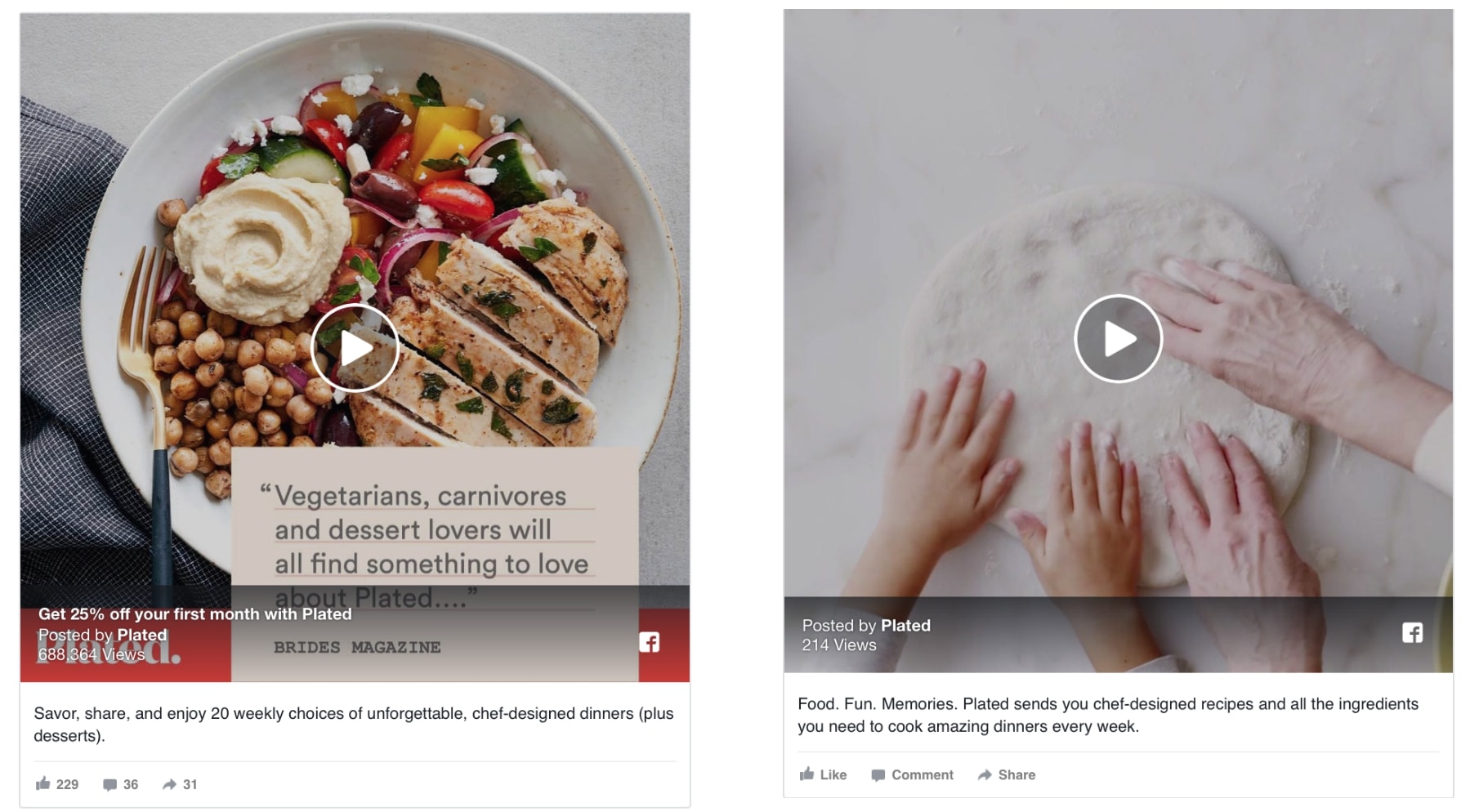
They’re both about the same brand, they’re both videos, and they’re advertising the same thing. The biggest difference is that one has social proof in the form of engagement and acustomer testimonialfrom a magazine. The other doesn’t. If I had to bet, you’re probably more drawn to the one with social proof.
That’s the difference social proof can make in your online marketing efforts.
Of course, there are many different forms of social proof. Let’s take a look at the most common types of social proof and how you can use them for your business.
6 types of social proof
Social proof can be generated on any online platform where you have a presence, including your site and preferred social networks. It can be diverse in how it manifests, and can cover a wide range of actions on different channels from different groups of people.
1. The wisdom of the crowd
Quantifiable signs of a brand’s popularity are a common type of social proof, and it can get potential customers to feel better about buying from you, or at least be more inclined to check out what you’re selling.
For example, as a shopper, you’ll probably judge an unfamiliar business based on their number of followers on any given social media account. A Facebook page with 115,000 likes is bound to come across as more established than a page with 500.

Types of social proof that fit under this category also include:
- The number of likes, comments, views, and shares on social media posts
- Viewership numbers on live broadcasts on Facebook or Instagram
- Sharing the number of subscribers on your email list to get your audience to opt into it.
2. User
Consumers trust what other people are saying online, and peer-driven praise will be your most effective selling tool.
In fact, some70% of US consumersseek out opinions from independentreview sitesbefore making a purchase. These reviews will absolutely influence buying decisions, and it can be the difference between high bounce rates and high conversion rates.
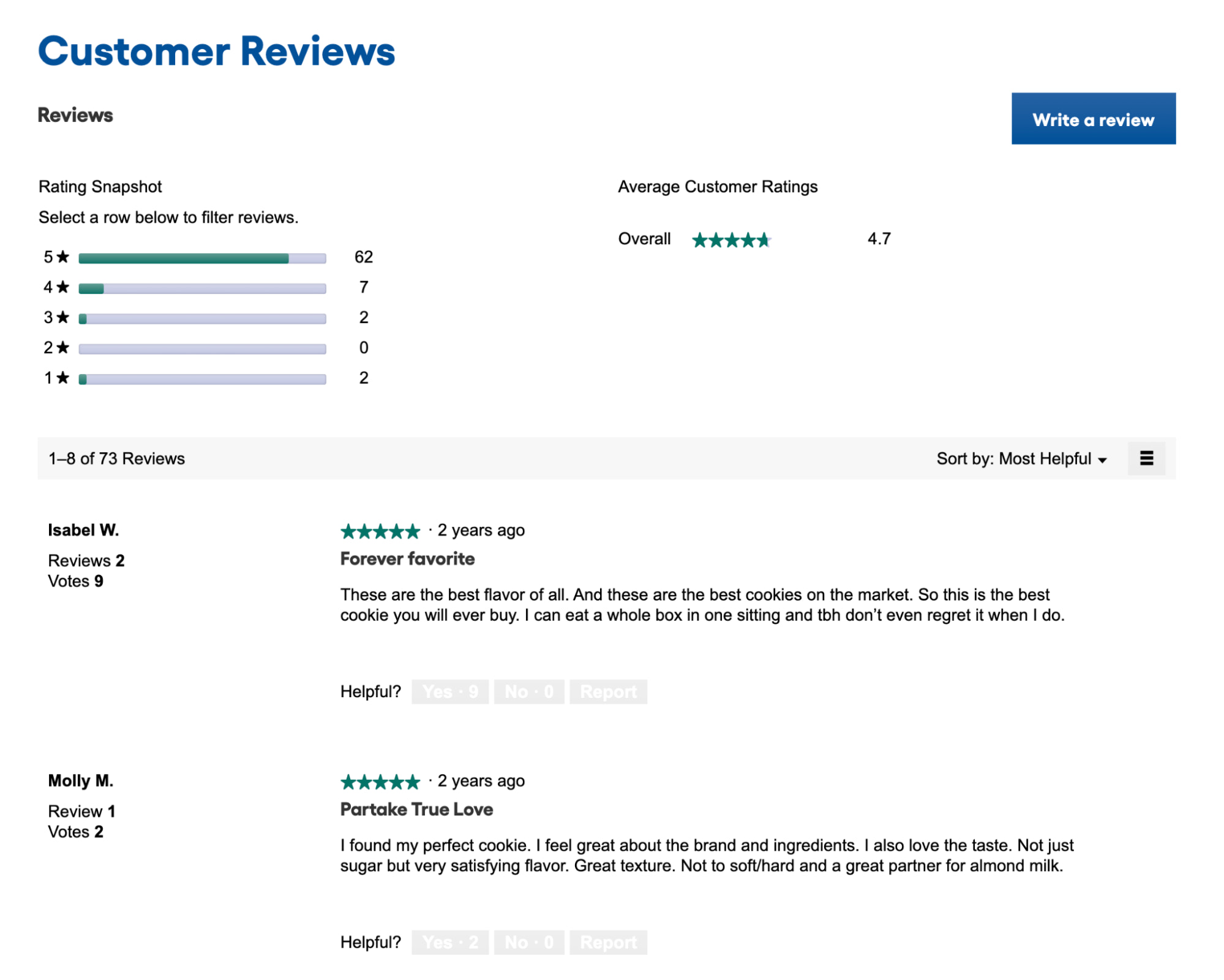
Reviews and ratings can be collected and displayed on your site, through an app, or in open forums like Yelp, Facebook, or even Google. Both product reviews and general company reviews will benefit you, and customers will trust what their peers have to say.
3. Celebrity endorsement
Celebrity social proof can be tricky to create. Paid-for partnerships aren’t always considered as authentic as peer-driven proof, but they can still be effective—especially if they’re genuine.
Content from influencers and celebrities that is shared publicly still counts as an endorsement. Micro-influencers, such as industry bloggers and complementary businesses within your niche, may have an influence that overlaps with your target audience, and these endorsements can ring true, as long as the posts don’t read like a sales pitch.

4. The wisdom of friends
This social proof refers to people seeing that their friends approve of your product. For example, seeing a friend follow you on social media or using your product, like through user-generated content.
UGC is the content satisfied customers share online about your brand. This often takes the form of customers sharing posts that detail their experience with your product or brand on their personal accounts. They may tag you or use your hashtag.
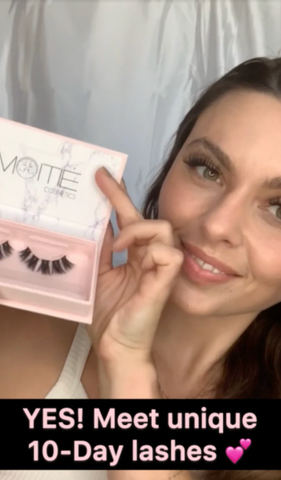
This isnotthe same as sponsored content, which makes it seem more authentic, and users trust it more. If you can find this content and get permission, share it on your own channels.
5. Certification
Certification proof is when an authoritative figure in your industry gives you a stamp of approval. Think of getting a verified badge on TikTok and Instagram.
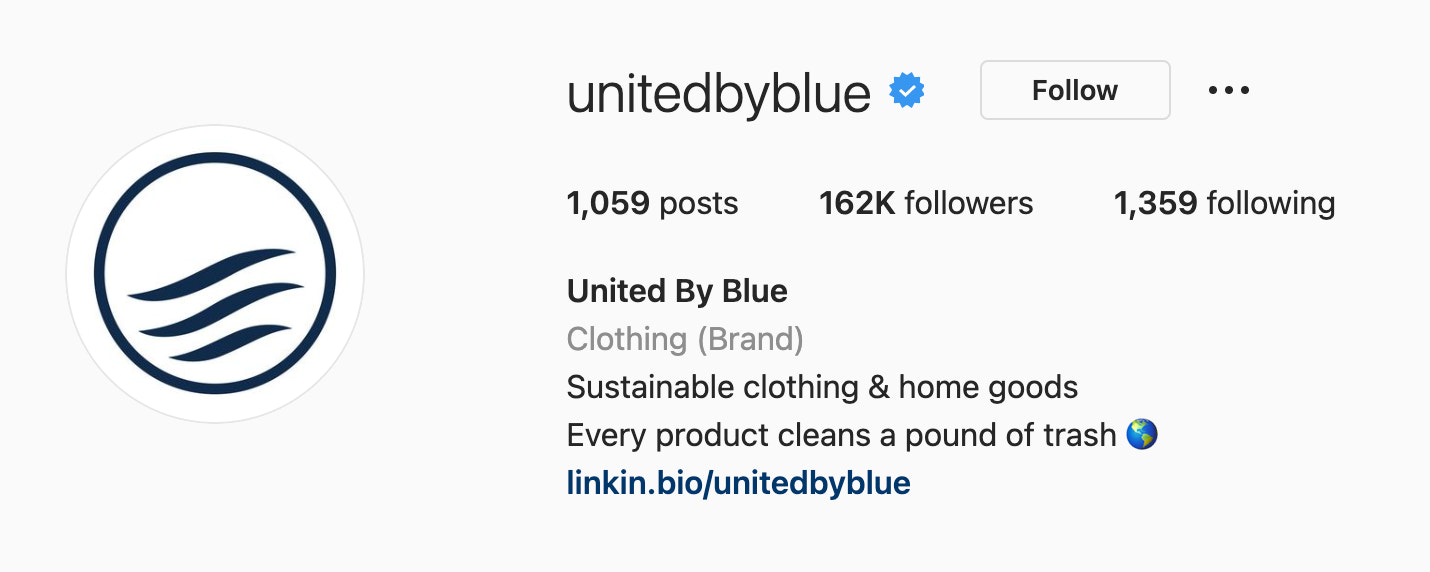
6. Expert
Expert social proof refers to when an industry expert recommends your products or services, or publicly associates themselves with your brand. For example, an Instagram story or TikTok shoutout from an expert, or having someone as a guest on your Instagram Live.
Best social proof examples
Social proof is an undeniably useful marketing principle that all ecommerce sites should focus on trying to leverage in one way or another. But how exactly do you do that?
Let’s take a look at the different places you can display social proof and how you can leverage it.
1. Customer reviews on product page
The first and often most popular approach is to feature customer reviews. Try to cultivate and showcase reviews on individualproduct pages, landing pages, orcoming soon pages, especially if you can manage to capture some reviews with images.
I know I’ve bought clothing before because the reviews convinced me to do so; seeing how great it looked on real people and hearing how they loved it was enough to get me to convert.
Shopify storePartake Foodsleverages reviews well on its site. Not only does it have reviews present on product pages, it has a section at the bottom of the page that shows plenty of reviews available about the brand too.

2. Highlight bestselling products on category pages
The second way to leverage social proof on your website is to feature “bestselling” or trending products on your category pages. Showcasing products as popular gives customers confidence and satisfaction that they’re making the best purchase possible.
On Partake Foods’ cookies collection page, shoppers can clearly see the chocolate chip cookie is a bestseller. That, combined with star ratings underneath the product image, can encourage hesitant shoppers to investigate further and buy.
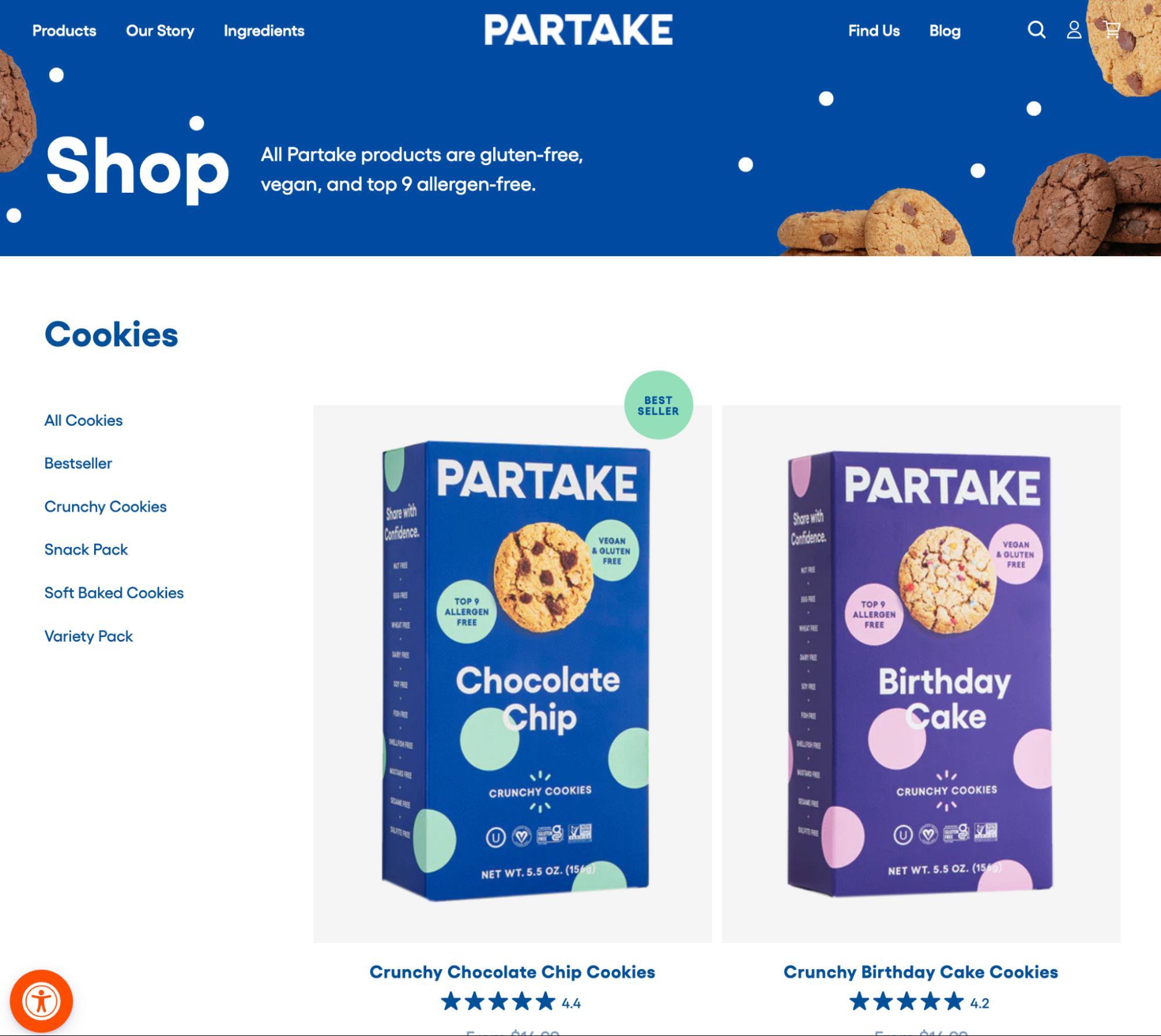
3. Add verified buyer labels to customer reviews
People are on the lookout forfake reviewswhen shopping online. If customers feel reviews are fake, it can be off putting and impact sales.
You can build shoppers’ trust by adding verified buyer labels to your reviews. A “Verified Buyer” label indicates that real customers have reviewed the product and recommended it.
See how Kettle & Fire incorporates these on its product pages. The brand puts a little green checkmark and label under each review to build trust with customers before purchasing.

4. Promote user-generated content on social media
Social media is another ideal place to showcase social proof, because it may be one of the first places people turn to in order to find it. These sites may also be the first touch point for many new customers, so having a lot of highly visible social proof upfront can encourage them to check out your site, too.
You can do this by focusing on engagement-building campaigns rather than just sales-oriented content. Many of your engagement-building campaigns can be used to source or leverage UGC in the form of product images that come directly from the users themselves.
功能在你的渠道(通过共享它permission) and then tagging the original poster. Remind other users that if they share their experience, they could be featured on your channel, too.
Many customers love this, and it helps them feel appreciated, so they might be inclined to share content about your brand in the future.Pipcorndoes this well in the example below.
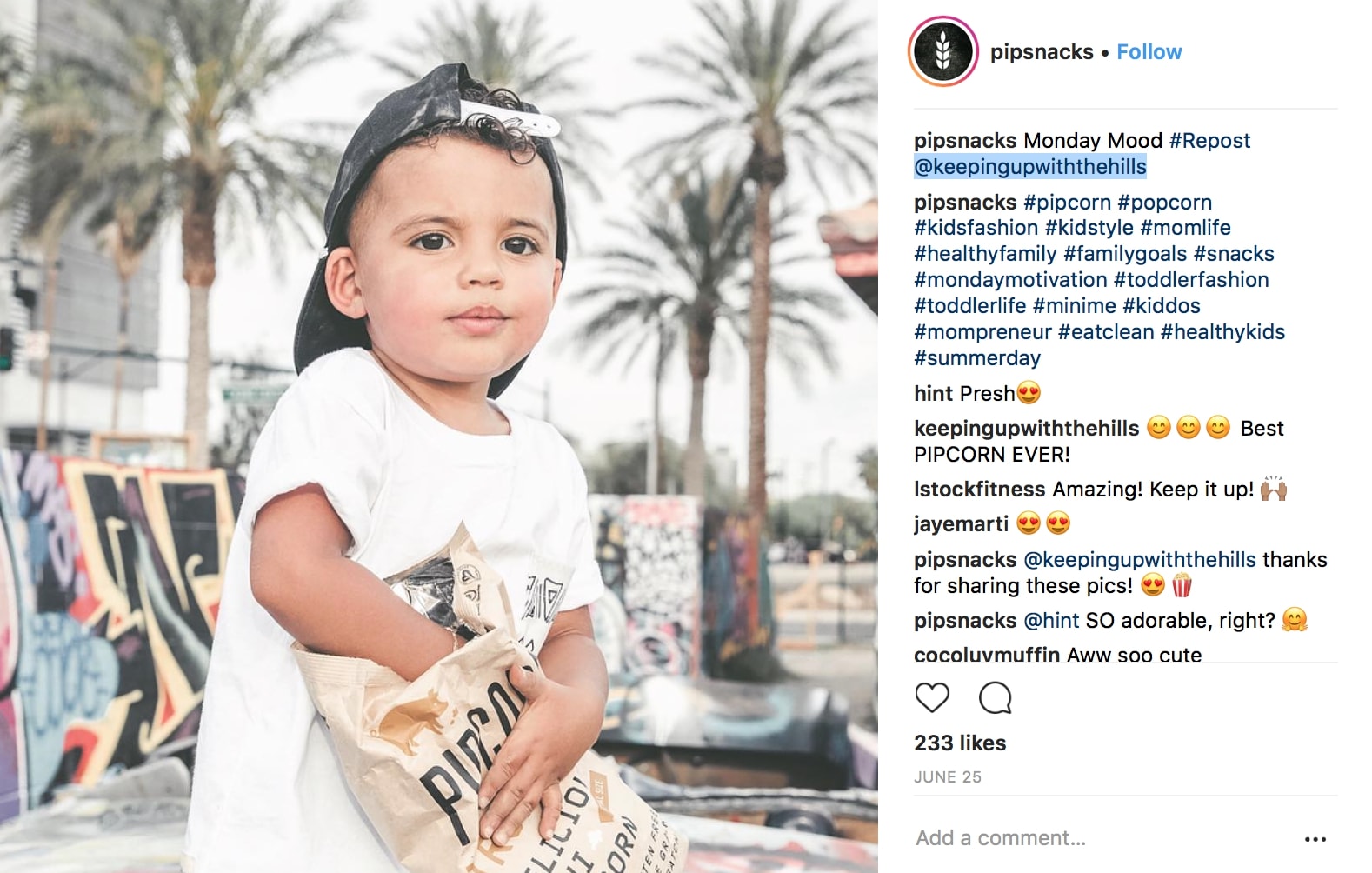
5. Showcase customer testimonials in paid ads
You can also use reviews as the focus of ads in a pay-per-click (PPC) campaign. This use of social proof is particularly effective in Facebook ads, Instagram ads, YouTube ads, and TikTok ads, which all have ample description room for you to do so.
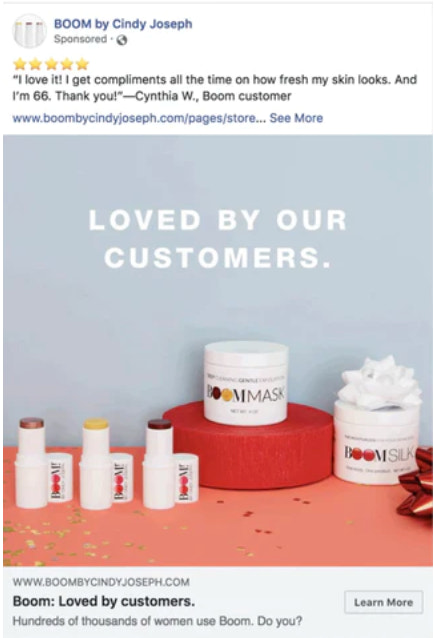
Place the text in the description and use images or videos of the products discussed in the testimonial. BOOM! by Cindy Joseph does this regularly, using customer reviews as the basis of its Facebook ads to build trust and increase sales quickly.
The more likes, comments, and shares you collect overtime on any given ad, the stronger the visible social proof, making new users more likely to pay attention. This creates a snowball effect, giving you more momentum the more you run a specific ad.
6. Show reviews in email marketing campaigns
Email is another great place to use social proof to drive sales, especially with a community of subscribers that are warmed up to the idea of buying from you.
Consider including raving customer reviews about specific products in your email design, alongside an image of that product and even the name of the customer, if you have permission to do so. You can even choose a subject line such as “See what our customers have to say” to capture interest and increase open rates.
Old Navy frequently uses this strategy to drive more sales. It showcases a specific product and then handpicks a few positive reviews that are sure to appeal to their email list.
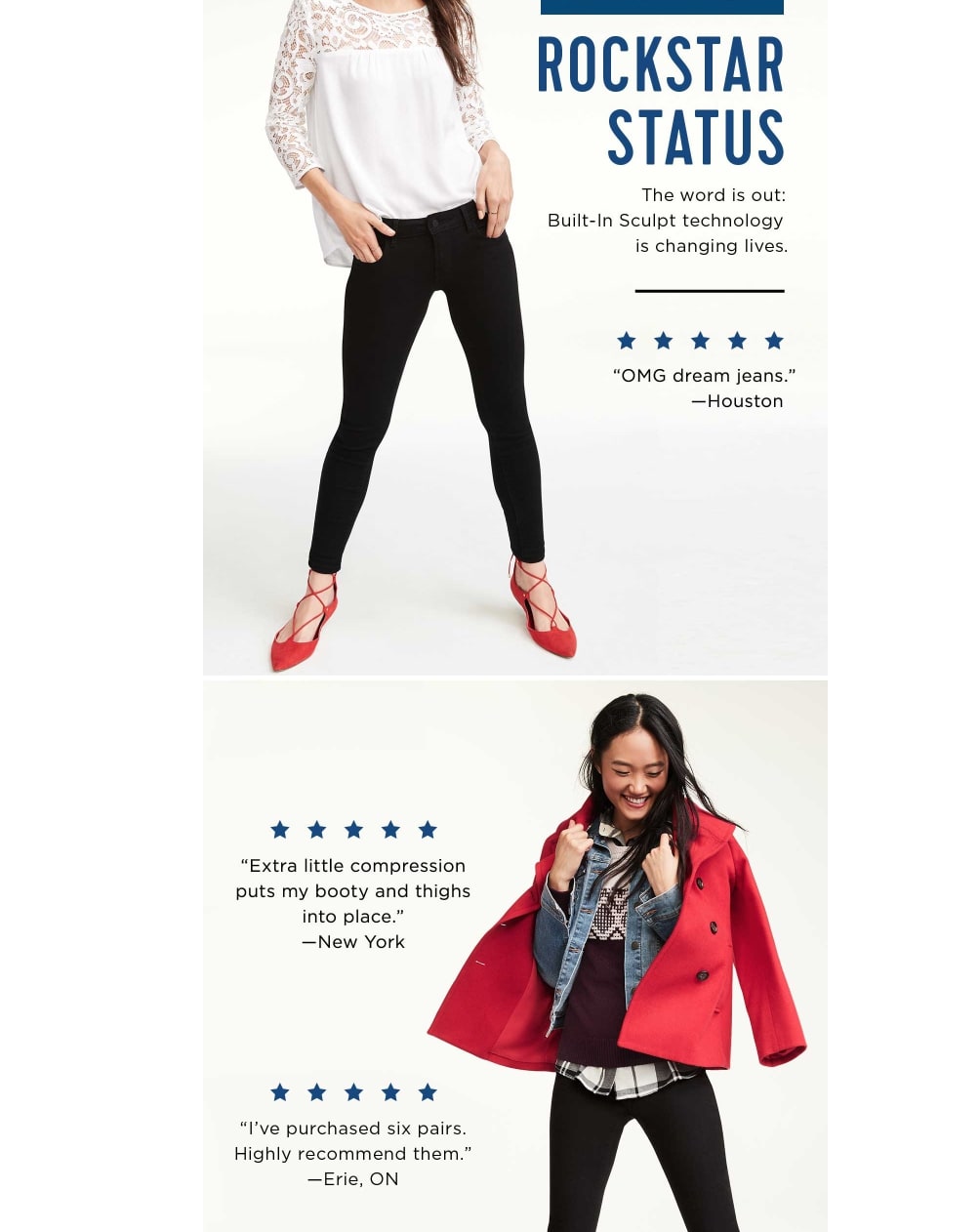
Social proof through email can grab the reader’s attention, because it’s not something that you see all that often. So use that to your advantage.
If you really want to stay ahead of the game, create automated email programs for all your top products, incorporating reviews, and then send them out to users who viewed the products or abandoned their cart before purchasing.
7. Share case studies about your product
Content marketing is an excellent way to build trust overall, and certain strategies can help you collect and share more social proof.
You can use engagement-building techniques to drive more social proof on your actual blog posts. This includes CTAs that encourage readers to leave comments by asking specific questions or opening the floor up to let them ask you questions.
Case studies are another way to leverage customer success stories into a growing customer base. One customer or story can be used to create the proof that shows you can help other customers accomplish the same thing.
BioClarityuses this strategy well with a full clinical study featuring its product placed prominently on its site. This sets them apart from the competition in the skin care market, who might not back up their claims in the same concrete way.

People are much more likely to read something shared by their friends or colleagues. If your social sharing tool has a share counter and visitors can see that your posts were shared several hundred (or thousand) times, that’s going to act as a powerful motivator for others to share and read the content on your site.
8. Run an influencer marketing campaign
Social proof is a criticalsales channelforsocial selling. That’s why brands regularly runinfluencer marketingcampaigns as the world shifts towardsocial commerce.
Influencer marketing is like a friend recommending a vacation spot. They’re trustworthy, so you value their advice. Followers trust influencers’ recommendations, too.
See how Tosh Snacks partnered with influencer Amanda Ghee to promote its honey graham crackers. The influencer discusses how she and her friend love the snack, and shares a recipe for making a sweet treat at home.
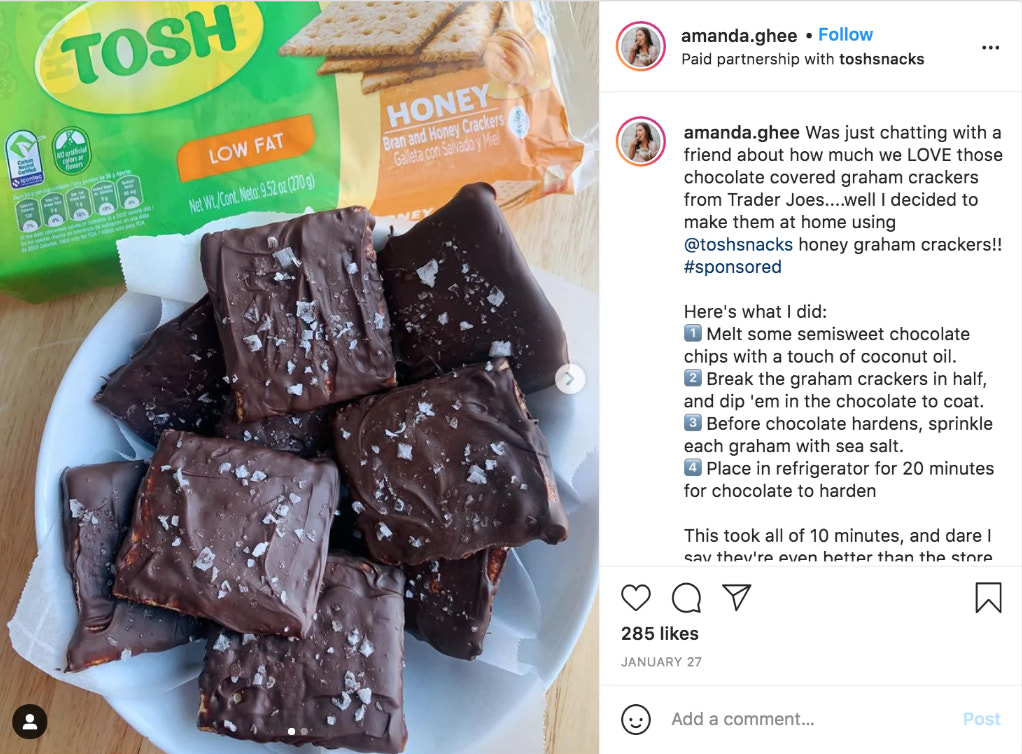
Anne-Sophie Bourjac, influencer relationship manager at Pierre Fabre Group, reports toGlossy, “Considering 63% of consumers have more faith in the brand content shared by influencers than direct advertising, we now need to develop targeted, long-term, and recurring influencer marketing strategies.”
Influencer marketing platform Traackr found that influencer marketing drives social sales. After testing various influencer strategies, they found that when an influencer posts mentioning discount or affiliate codes, brands can see the following results:
- Live shopping increased by 111%
- Tap to shop features increased by 521%
By partnering with social media influencers, you get exposure to a warm, welcoming audience, which can lead to better business results than banner ads.
Find influencers to drive sales with Shopify Collabs
Shopify Collabs makes it easy to partner with creators, promote your products, reach new customers, grow your sales, and track affiliate campaign performance all from Shopify admin.
Discover Shopify Collabs9.嗨ghlight rewards and accolades
Want people to know about your business’s achievements? Show them off on your website. United By Blue, which sells sustainable apparel and goods, proudly displays the amount of trash removed from the ocean and waterways.

水电瓶,例如,促进其程序标准ks For All, which helps nonprofit organizations build, maintain, and restore access to outdoor parks. The company has donated more than $2.5 million over five years, and continues to work toward making a difference in the world.
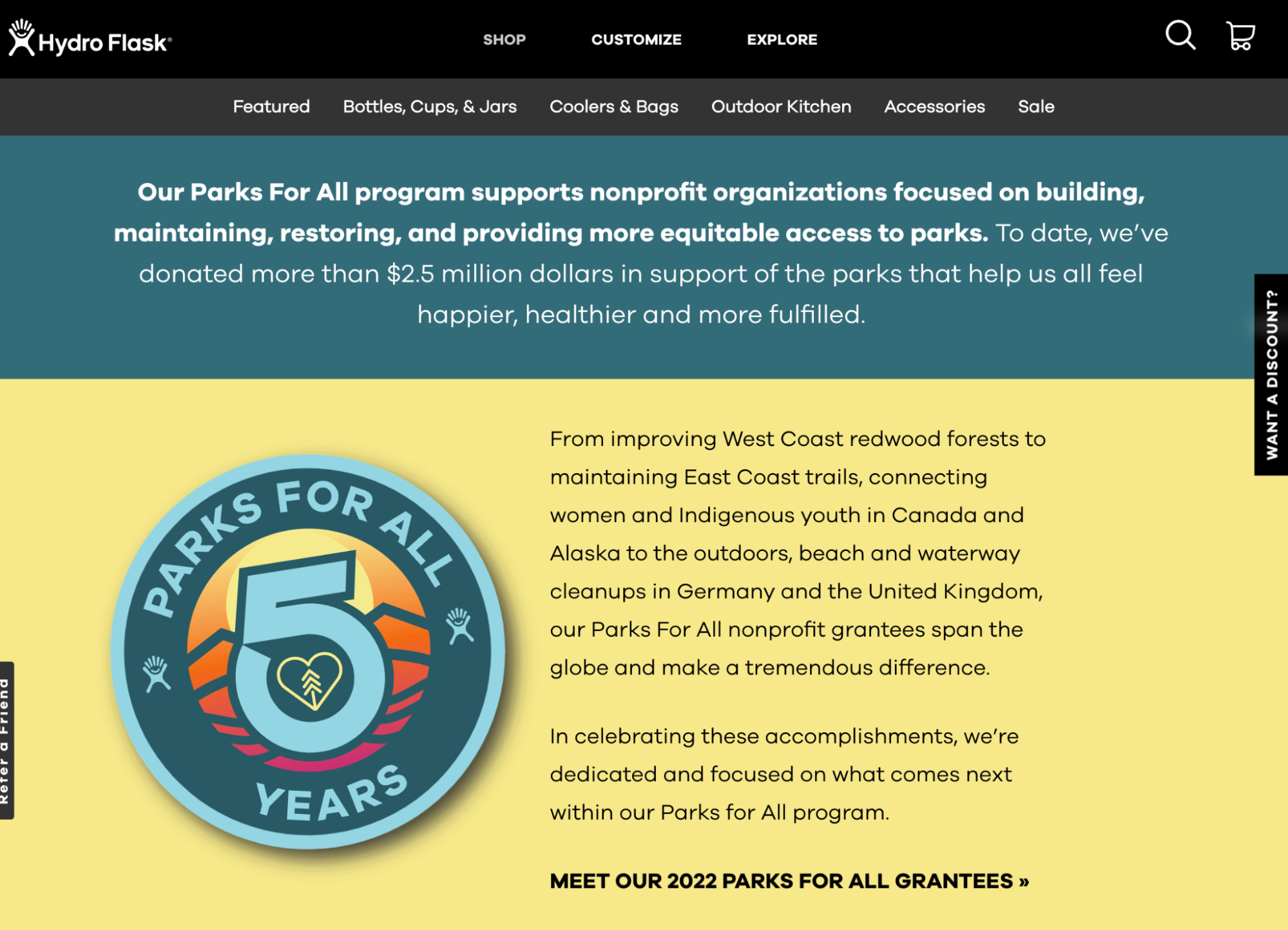
Achievements like these connect your brand to customers with the same ideals and inspirations.
10. Place media logos on your homepage
Another way to show social proof is by placing media logos on your website. The longevity and reputation of certain brands can show people you’re good to do business with.
If you’ve been featured in a publication like Buzzfeed, HuffPost, or a niche magazine relevant to your target market, put those logos on your homepage andAbout page.
Pura Vida, a handcrafted bracelet and jewelry retailer, excels at this. In the “What People Are Saying” section, it shows logos of popular publications, its number of five-star customer reviews, and quotes about the brand. It’s a smart way to show shoppers they are credible and have excellent products for purchase.
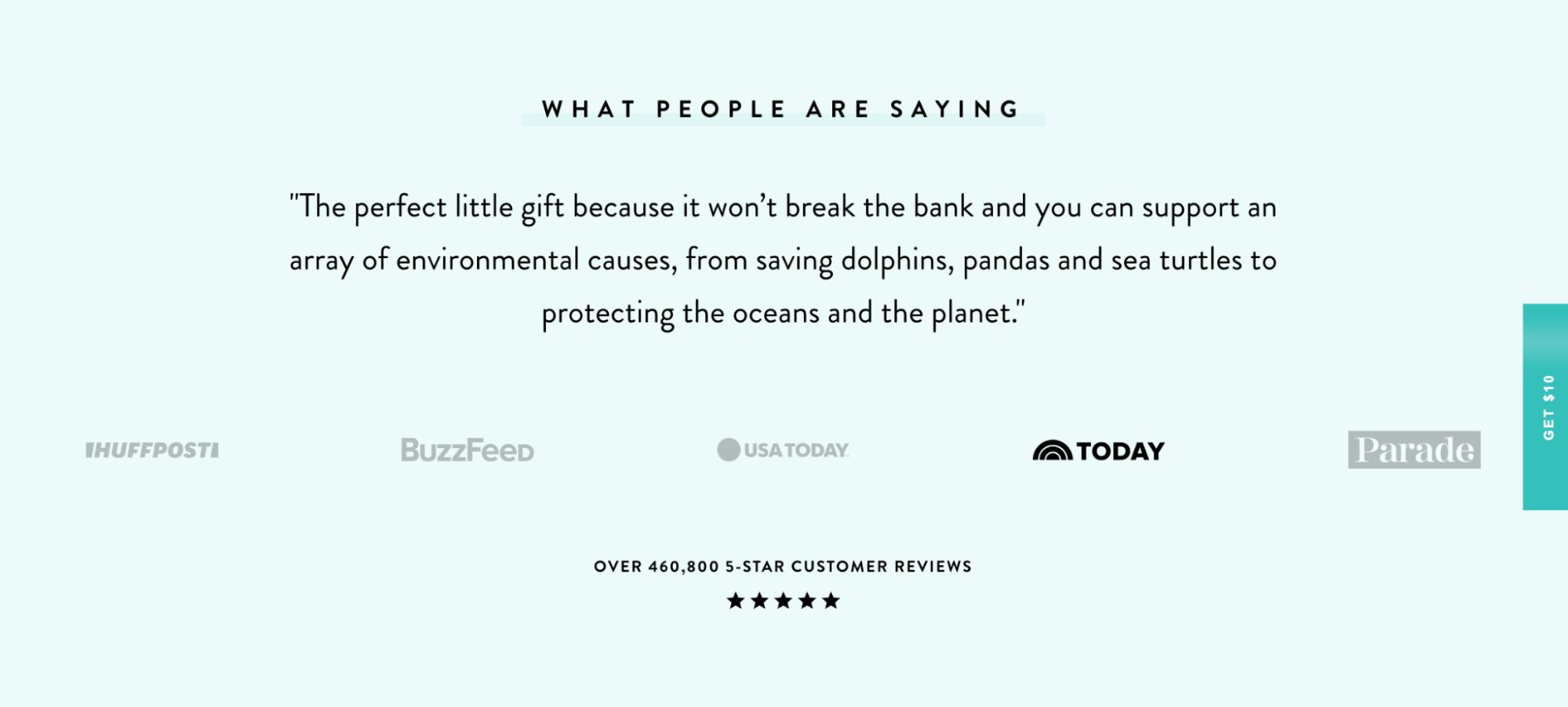
11. Get verified on social media
A verified badge, or the infamous blue checkmark next to your profile name, tells shoppers you’re a legit company. It shows that social media platforms like Instagram, TikTok, or Facebook have verified the authenticity of your account.
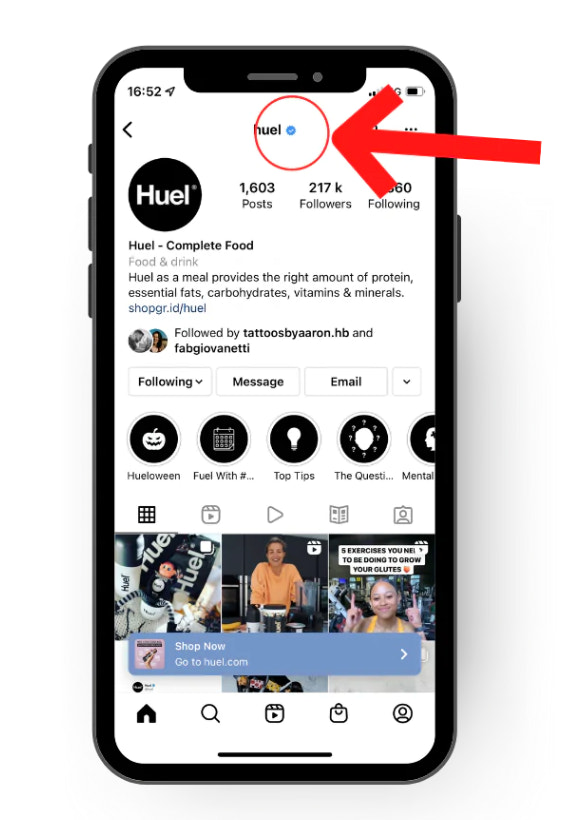
Verification lends credibility to your brand and makes you more trustworthy than unverified ones. One study also found that verified accounts see a30% higher engagement rate, on average.
Learn more:How to Get Verified on Instagram in 2022
12. Create a branded social media hashtag
A branded hashtag is one that is unique to your business. It can be your company name or a tagline. Some brands will even create branded hashtags for specific campaigns.
Say a potential customer goes on Instagram or TikTok to check out your brand. They see a branded hashtag and click it. In the feed, they see hundreds of people wearing or talking about your product.
Fashion Nova, an online clothing brand, promotes the hashtag #NovaBabe on its Instagram profile. .
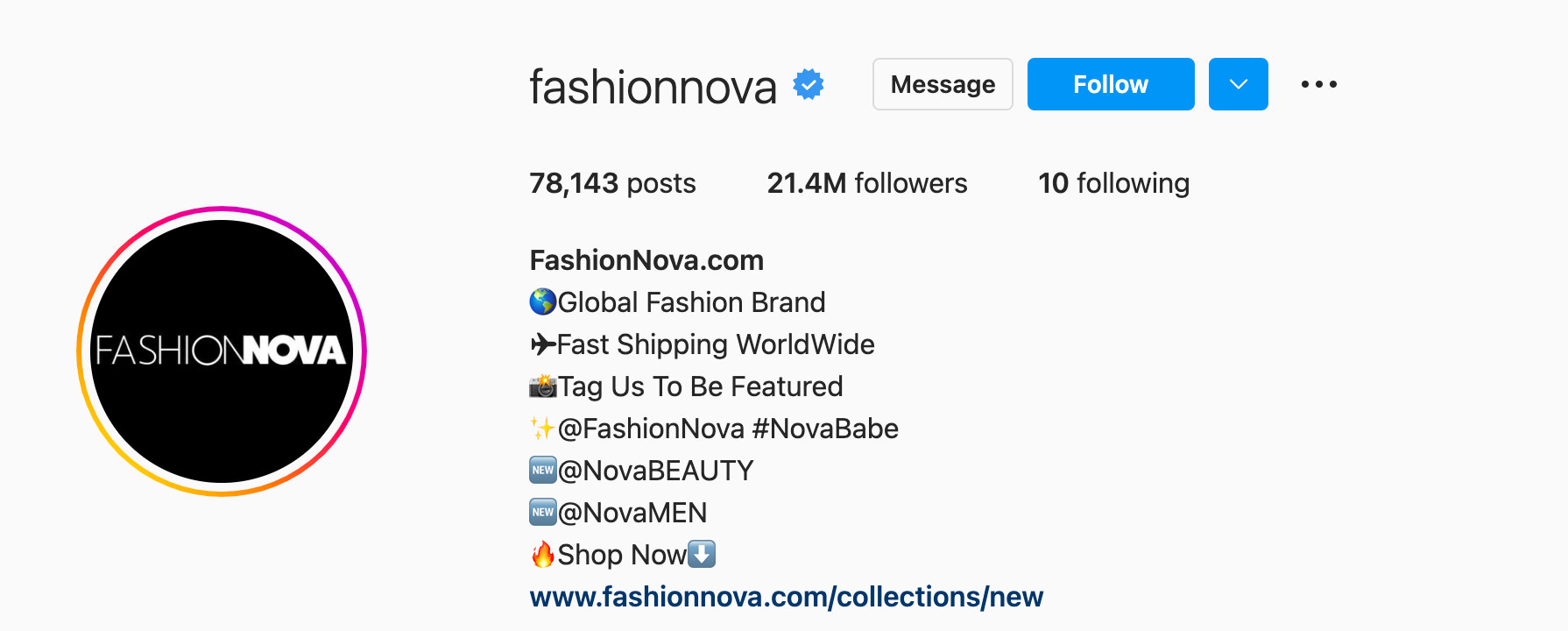
When you click on the hashtag, you’re taken to a public feed with over 1.7 million posts from women wearing Fashion Nova clothes.
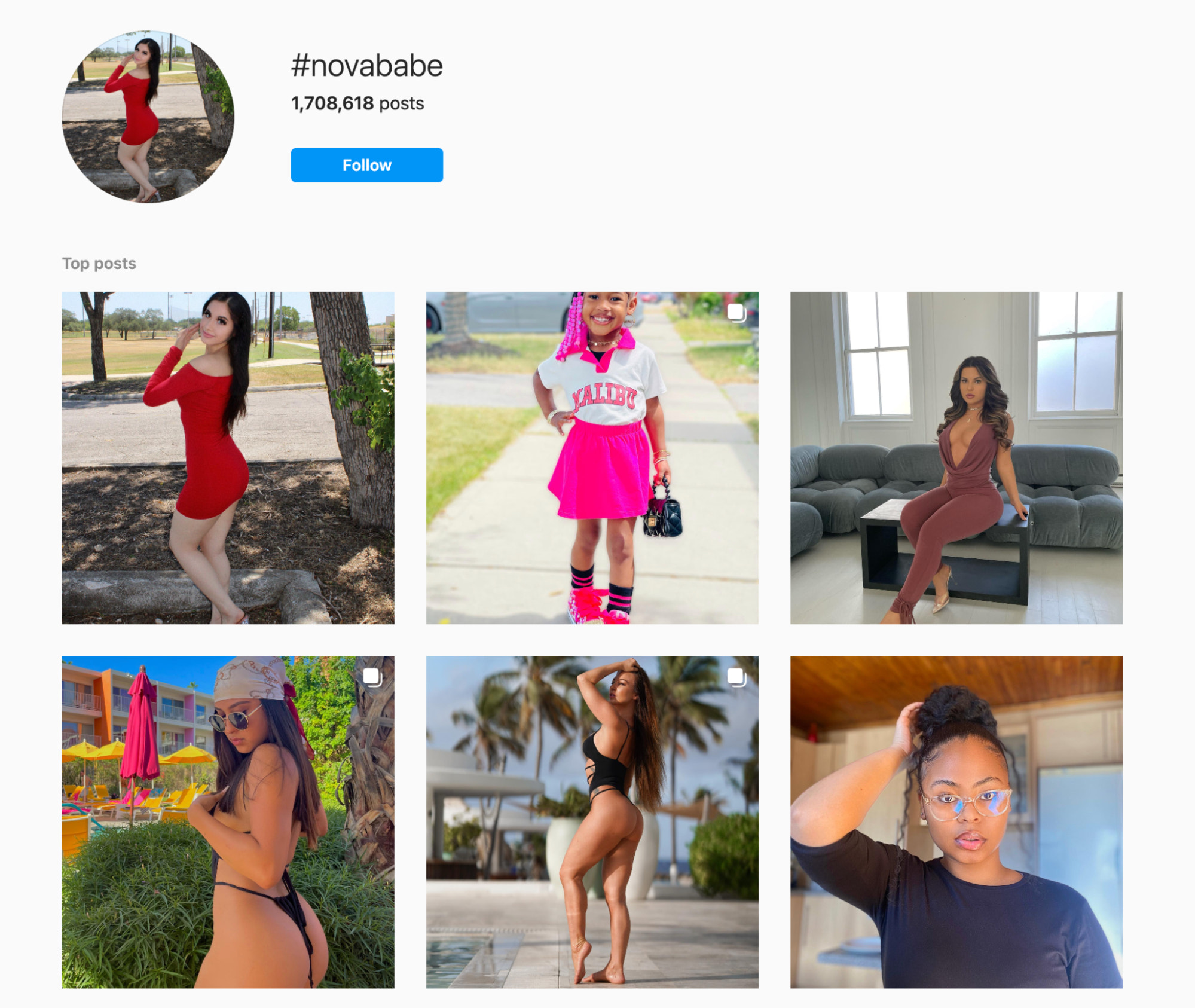
Branded hashtags are an effective way to show social proof and spread the word about your business. This “wisdom of the crowd” social proof is key to proving your products are credible and can lead to more sales for your online store.
13. Show proof of demand
This form of social proof shows that not only are customers interested in what you’re saying, they’re actually buying from you. A large volume of sales showcases demand, and in a snowball effect, it can create more demand (and thus sales) as a result.
The easiest way to use this is to simply share how many orders you’ve fulfilled, incorporating it into your copywriting. Or likeLSTN,一个社会企业,你可以展示任何metric is most relevant to your business and audience.

You can also, with the help of apps and tools, automatically make the following information visible to site followers to establish social proof:
- Number of items sold, which may be reflected in sales counters or simply by showing customers when supplies are low or sold out (harnessing another persuasive tool known as scarcity)
- Individual customers who recently purchased a specific product
- Number of customers currently viewing your site or a specific product page
Social proof marketing apps
There are a number of different types of social proof, and so many ways that you can leverage it. This can feel overwhelming, but fortunately there are plenty of greatecommerce toolsthat can help you out.
1. Loox
Looxis a Shopify app that will automatically send emails to your customers asking for reviews, even offering discounts if they leave reviews with photos. It then makes it easy to showcase user reviews (and pictures!) in galleries that can be placed on any page in your store, including the homepage, your product pages, or a designated review page.
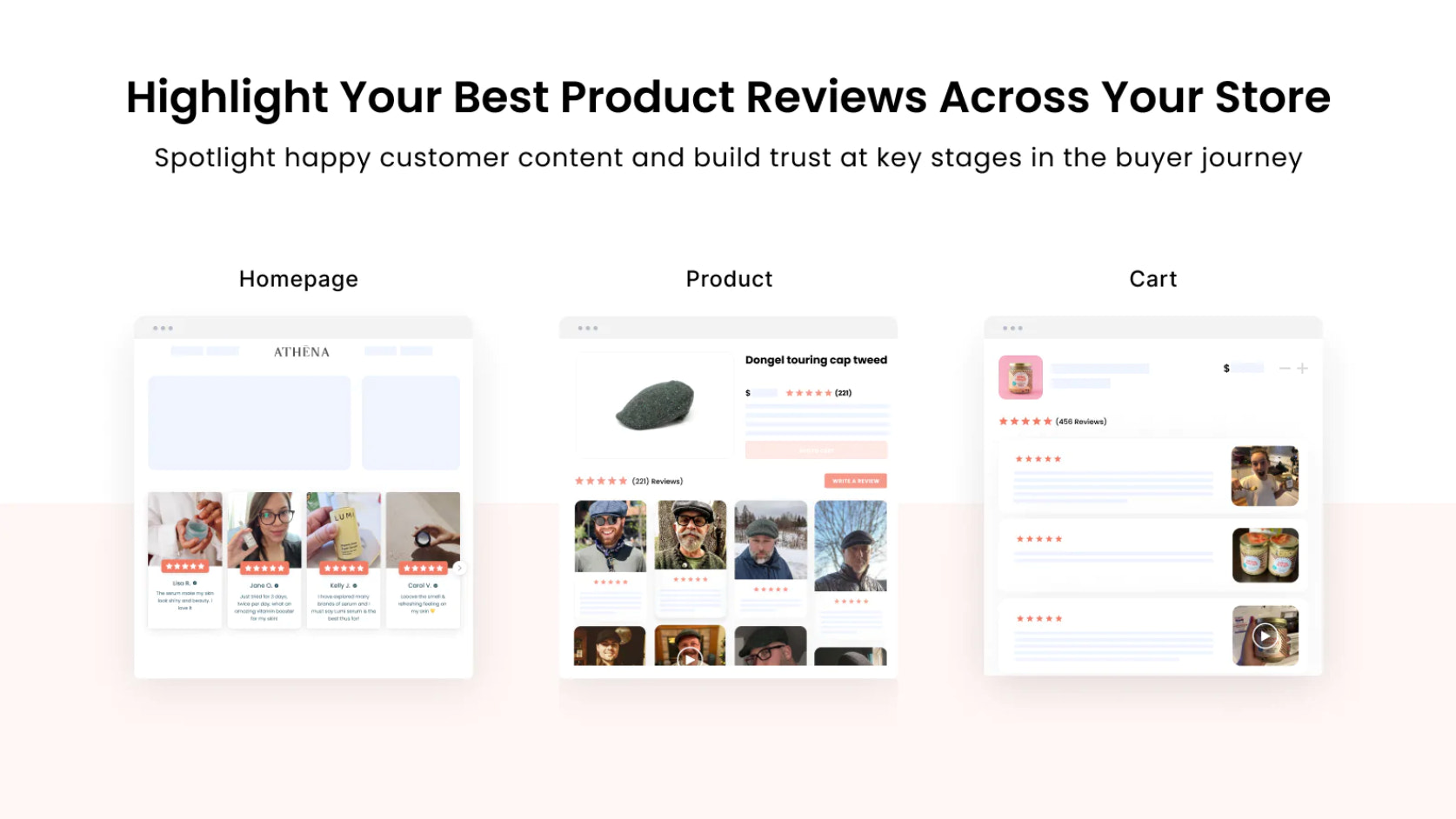
2. Fera
Ferais another reviews app for Shopify with customizable widgets that look stunning on your site. You can import reviews from Facebook, Google, Etsy, and more in minutes. It also asks for reviews automatically from customers, offering discounts or incentives for reviews.
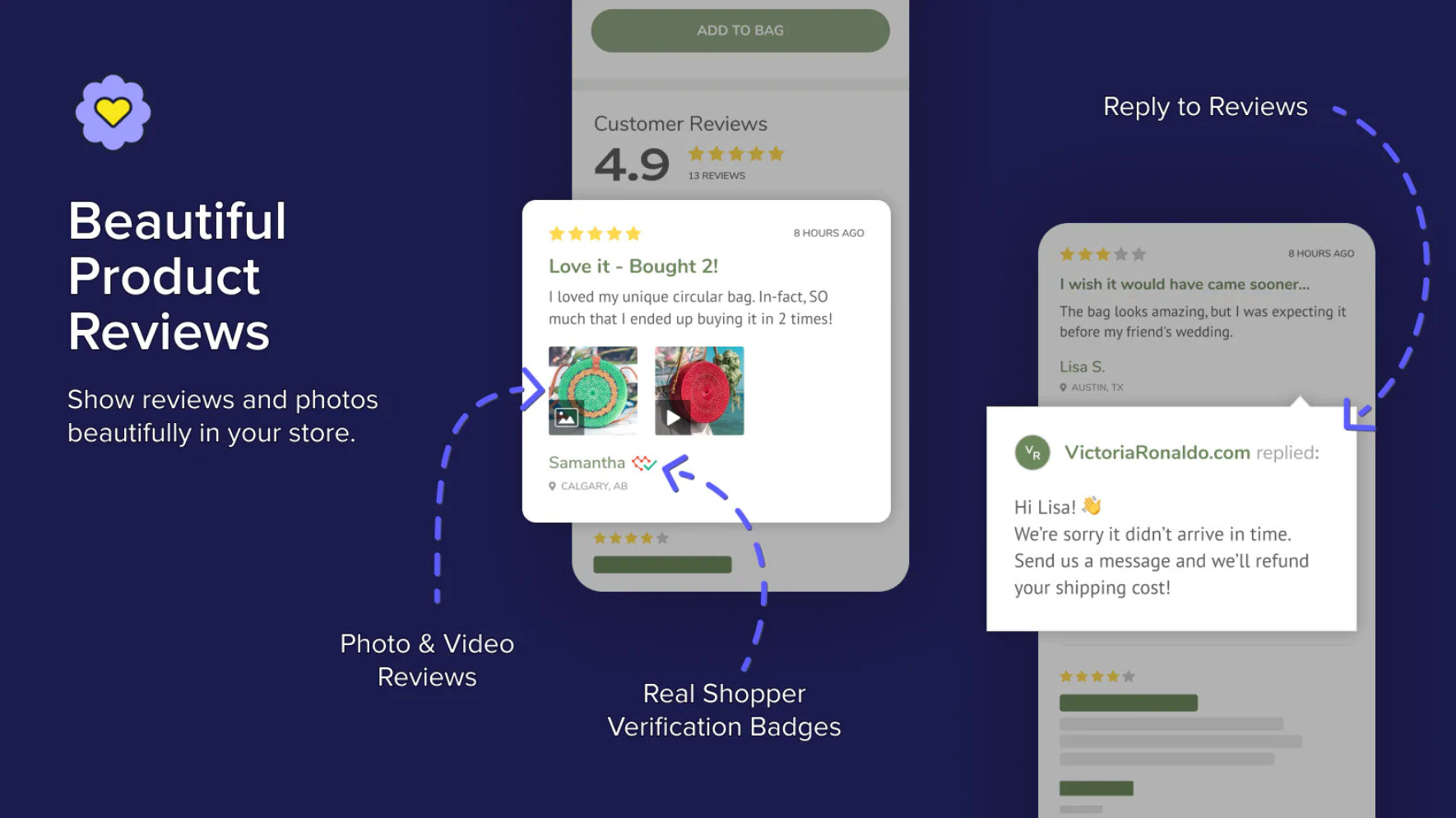
The best part? Product reviews with Fera are SEO-friendly and will show up in Google Search and Google Shopping. If you want a way to easily create and manage photo and video reviews, Fera is a great app to try.
3. PressKitBuilder
If you want to get the word out about your site quickly,PressKitBuildercan help you do just that. It helps you create a professional press kit for bloggers and journalists, making it easier for them to write about you.
It will also make it easy for you to display the mentions and social proof you’ve already received on your site. This ensures that any press mentions get a second, more permanent life on your website too, not just in the original media outlet where they appeared.
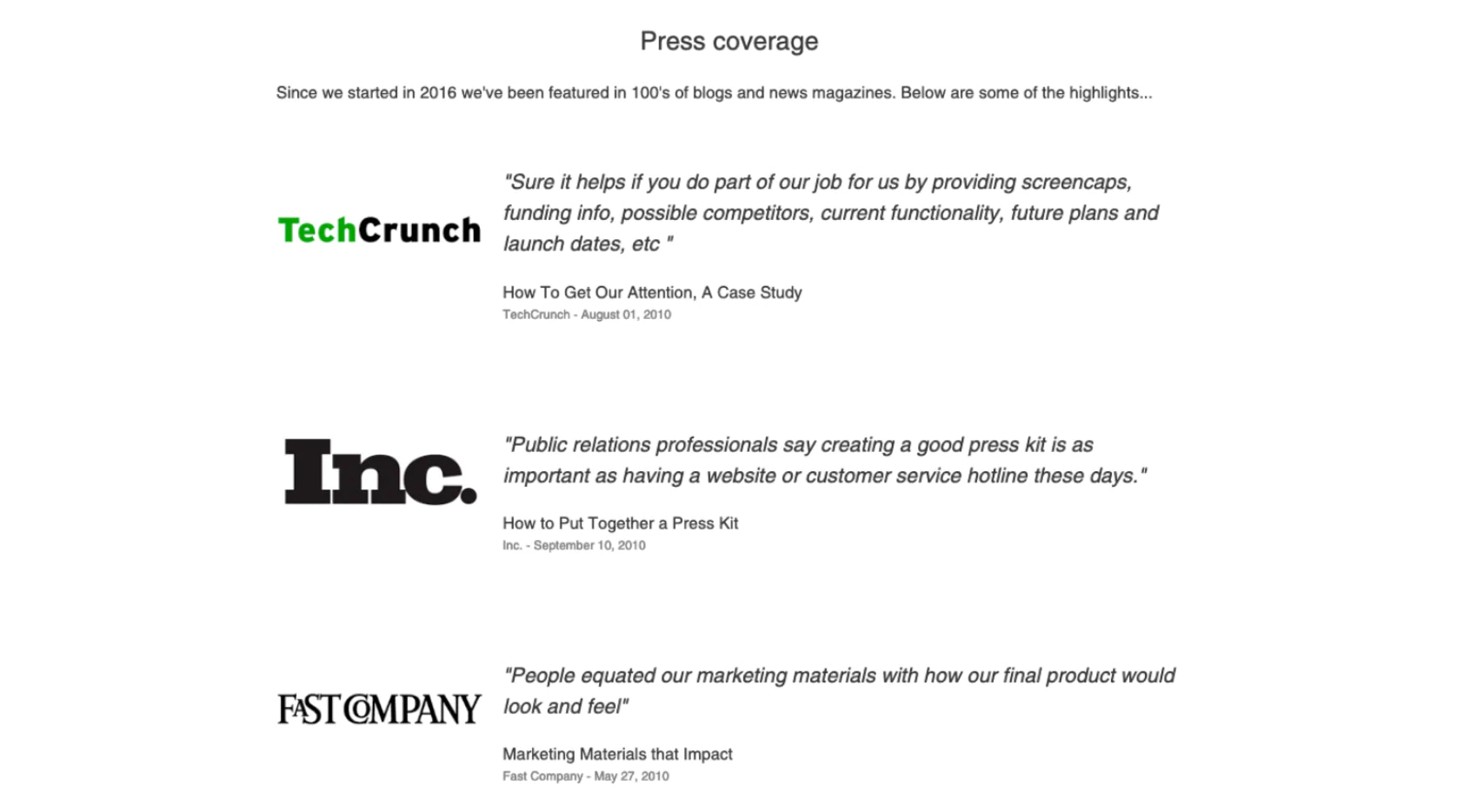
Many new users would feel better about a brand they just discovered if they saw that it was featured in a recognizable publication or by their favorite blogger, so this could yield huge benefits when done properly.
4. Social Media Icons by Zotabox
Want to get more shares on your content and product pages from your customers? You can increase the amount of shares your site receives by placing social sharing buttons on your pages and images. TheSocial Media Icons Shopify appby Zotabox is a great option.

There are also social share counters you can place on your content, showing other users how many times your content has been shared already and encouraging them to do the same.
This is a free plug-in with premium upgrades available. It has more great features that make it valuable for other purposes, too, like messaging options and QR codes for Messenger and WhatsApp.
The power of social proof is undeniable
Social proof is about selling through trust, reputation, and authenticity. One key lesson many entrepreneurs quickly learn is that a happy customer can outsell even the most compelling copy.
That’s what makes social proof so special. The more value you provide happy customers, the more willing they are to encourage others to give your business a chance.
In many ways, making the most of social proof comes down to taking an honest look at your business—your past customers, milestones, or big wins—and finding ways to distill those moments into compelling digital marketing messages.
Don’t have any social proof yet and wondering what to do?Learn how to build trust with zero sales.
Ready to create your business? Start your free trial of Shopify—no credit card required.
Social proof FAQ
What is an example of social proof?
What are the 6 types of social proof?
- Wisdom of the crowd
- User
- Celebrity
- Wisdom of friends
- Certification
- Expert

